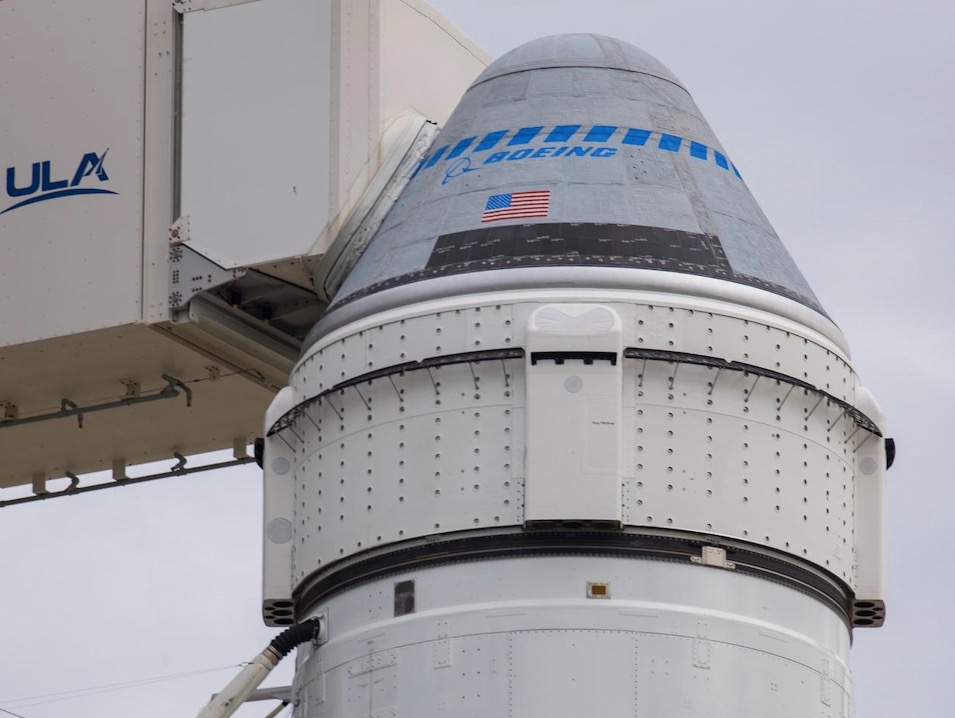
Boeing's CST-100 Starliner capsule remains on target for its crucial May 19 test launch, company representatives and NASA officials said.
Starliner was supposed to lift off on an uncrewed mission to the International Space Station called Orbital Flight Test 2 (OFT-2) in August 2021. But standard preflight checks shortly before launch revealed that 13 of the 24 oxidizer valves in the propulsion system in Starliner's service module were stuck.
So Boeing and NASA rolled Starliner and its United Launch Alliance Atlas V rocket off the pad for troubleshooting. Within a few months, investigators had found the likely cause of the valve issue: Nitrogen tetroxide (NTO) oxidizer reacted with moisture in the air, generating nitric acid. The nitric acid then reacted with the aluminum housing of the valves, creating corrosion products that impeded valve function.
In photos: Boeing's Starliner OFT-2 mission in pictures
That initial diagnosis was on the money, Boeing representatives and NASA officials said during a call with reporters today (May 3). And the mission team has successfully addressed the problem in the time since, they added.
"Super proud of the Starliner team and the NASA team over the last eight months," NASA Commercial Crew Program Manager Steve Stich said during today's call. "It's been a hard eight months, I would say, but very fulfilling that we've resolved the problem with the oxidizer isolation valves and we're headed on toward launch."
The valve fix is a multilayered one. For example, technicians sealed up "a potential moisture path" in the valves' electrical connectors, Michelle Parker, vice president and deputy general manager of Boeing Space and Launch, explained during today's call. The team also now purges moisture out of the valves using nitrogen gas, she said.
Get the Space.com Newsletter
Breaking space news, the latest updates on rocket launches, skywatching events and more!
"And then, in addition, we've loaded the NTO later," Parker said. "And we've added — operationally, we've added cycling of the valves every two to five days post-load until the time that we launch, to ensure that the valves remain operational."
Boeing also gave the OFT-2 Starliner a new service module, mating that component to the crew capsule on March 12.
If all goes according to plan on OFT-2, Starliner will meet up with the ISS about a day after launch and spend five to 10 days docked with the station, NASA officials have said.
As its name suggests, OFT-2 will be Starliner's second crack at an uncrewed test mission to the ISS. The first attempt, which occurred in December 2019, was cut short when Starliner suffered a number of software glitches and was unable to meet up with the station.
Boeing holds a NASA contract to fly agency astronauts to and from the ISS with Starliner. The capsule cannot start carrying crew until it aces an uncrewed test flight to the orbiting lab; the company is also hoping to fly its crewed test flight before the year ends.
SpaceX also holds a NASA commercial crew contract. Elon Musk's company recently launched its fourth operational astronaut mission for the agency, which is known as Crew-4. The four astronauts of SpaceX's Crew-3 flight are currently on board the station but will return to Earth early Friday morning (May 6), if all goes according to plan.
Mike Wall is the author of "Out There" (Grand Central Publishing, 2018; illustrated by Karl Tate), a book about the search for alien life. Follow him on Twitter @michaeldwall. Follow us on Twitter @Spacedotcom or on Facebook.
Join our Space Forums to keep talking space on the latest missions, night sky and more! And if you have a news tip, correction or comment, let us know at: community@space.com.

Michael Wall is a Senior Space Writer with Space.com and joined the team in 2010. He primarily covers exoplanets, spaceflight and military space, but has been known to dabble in the space art beat. His book about the search for alien life, "Out There," was published on Nov. 13, 2018. Before becoming a science writer, Michael worked as a herpetologist and wildlife biologist. He has a Ph.D. in evolutionary biology from the University of Sydney, Australia, a bachelor's degree from the University of Arizona, and a graduate certificate in science writing from the University of California, Santa Cruz. To find out what his latest project is, you can follow Michael on Twitter.









